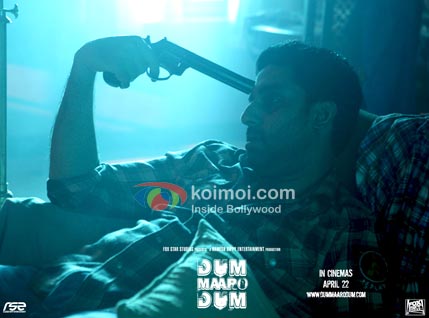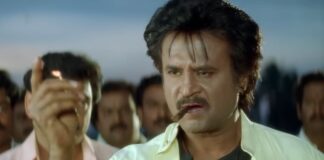Think you know all about Dum Maaro Dum? Read on…
1. Abhishek Bachchan’s Name Change
Vishnu Kamat, Abhishek Bachchan’s character in Dum Maaro Dum, was initially called Nishikant Kamat after the name of the Bollywood director who had helmed Mumbai Meri Jaan. Nishikant (the director) is a fast friend of the film’s scriptwriter, Shridhar Raghavan, and director, Rohan Sippy.
2. ‘Subah Ko Kar Salaam’ To ‘Dum Maaro Dum’
Dum Maaro Dum was earlier titled Subah Ko Kar Salaam. The original title, given by Shridhar Raghavan, the scriptwriter of the film, is drawn from the lyrics of an old TV serial, Subah, that was broadcast on Doordarshan.

3. Prateik’s Voice Modulation
Prateik, who essays the role of a young college boy in Dum Maaro Dum, played with his voice to suit the character. Whereas in real life, Prateik has a normal voice, he tweaked it to make it sound squeaky, just like a teenager’s voice.
4. 70 Days
The shooting of Dum Maaro Dum was wrapped up in 70 days, mostly in Goa.
5. Budget
Rs. 24 crore (Rs. 240 million) was spent on the production of Dum Maaro Dum.
6. Smoking Is Injurious To Health… Bipasha’s Health For Sure
Bipasha Basu, who is a non-smoker, tried to learn how to smoke for a scene in the film. But when Rohan Sippy found out that Bipasha was not comfortable smoking, he promptly dropped the scene.
7. Abhishek’s Choice
Abhishek Bachchan was first approached to play the role of Joki in Dum Maaro Dum. However, on reading the script, Abhishek told director Rohan Sippy that he liked the character of Vishnu Kamat, the hard-nosed cop, better. Rohan agreed to Abhishek’s choice and the role of Joki fell into Rana Daggubati’s lap.
8. On Location
Trying to keep it as real as possible, Rohan Sippy shot a sequence with an actual crowd of 20-30 thousand people in Arpora market in Goa.
9. Dolby 7.1 – A Technical First
Dum Maaro Dum is the first Indian film to be mixed in Dolby 7.1. Only about 15-18 films worldwide have used this high-end sound technology till date. While the producers did not have to shell out too much for this technology upgrade, it did take Rohan Sippy over a month to complete the mixing. Incidentally, since conventional cinemas are not capable of reproducing Dolby 7.1 playback, about 100 screens across India have been upgraded to Dolby 7.1, specially for the screening of Dum Maaro Dum.
10. Digital Imaging
In keeping with the times, director Rohan Sippy decided to shoot a few scenes in the film with a Canon 7D digital camera. The Canon 7D is a small camera which looks like a still camera but works well in low-light conditions also. Using the 7D camera, Rohan captured wide shots, top shots of the Goa landscape, montage shots, as well as the shots for the film’s opening titles.





 Follow Us
Follow Us









